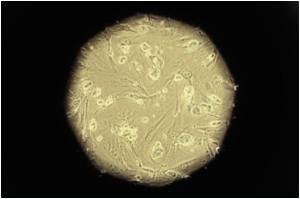US doctors have begun treating the first patient with embryonic stem cells as part of the first human study of the controversial treatment authorized by the government, the Geron Corporation

She declined, however, to give more details, citing patient privacy.
Preclinical studies of GRNOPC1 found human embryonic stem cells significantly improved locomotor activity of animals with spinal cord injuries when injected seven days after the injury.
Participants in the human trials must be newly injured and receive a one-time injection of about two million GRNOPC1 cells, seven to 14 days after sustaining their injury.
David Apple, Shepherd Center's medical director, said the clinical trial, which seeks to establish whether GRNOPC1 is safe and tolerated in humans, was a key step forward in the search for a cure to paralysis after spinal cord injury.
The Phase I trial -- expected to last two years and involve an estimated 10 patients -- comes just 11 years after Geron began working with human embryonic stem cells in 1999, when "many predicted that it would be a number of decades before a cell therapy would be approved for human clinical trials," Geron's president and chief executive Thomas Okarma said in a statement.
Advertisement
The ultimate goal is to inject GRNOPC1 cells into the spines of paralyzed human volunteers in the hope that this will prompt damaged nerve cells to regrow, enabling the patients to eventually recover feeling and movement.
Advertisement
Geron got clearance in January 2009 from the Food and Drug Administration to conduct human trials of GRNOPC1 embryonic stem cells, which are highly versatile, primitive cells capable of developing into any tissue.
Around six weeks later, President Barack Obama reversed a ban on federal funding for research on human embryonic stem cells, which had been imposed by his predecessor at the White House, George W. Bush.
But the clinical trials of GRNOPC1 remained on hold for more than a year while the US courts wrangled about whether lifting the ban on embryonic stem cell research was legal.
Backers of the research believe the field holds huge potential for treating serious diseases including cancer and Alzheimer's, and even for reversing paralysis.
Opponents argue that living embryos are destroyed in order to obtain the potentially life-saving embryonic stem cells.
In 1996, Congress enacted legislation known as the Dickey-Wicker amendment that bans federal funding for research in which human embryos are either destroyed or discarded.
In lifting the ban on embryonic stem cell research, the Obama administration argued the research does not require disposal or destruction of the embryos, which were created for in-vitro fertilization treatments but never used.
Late last month, a US appeals court ruled that the federal funding can continue, dissolving a lower court's ban.
Source-AFP










